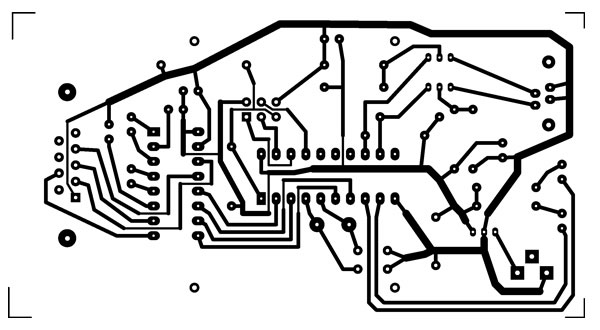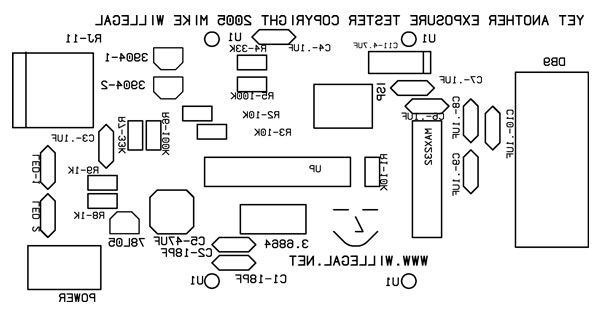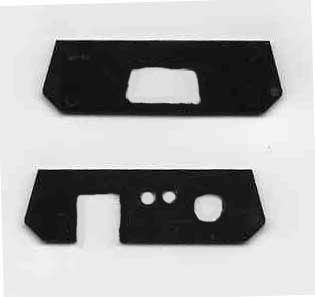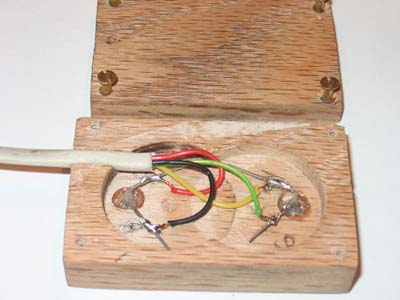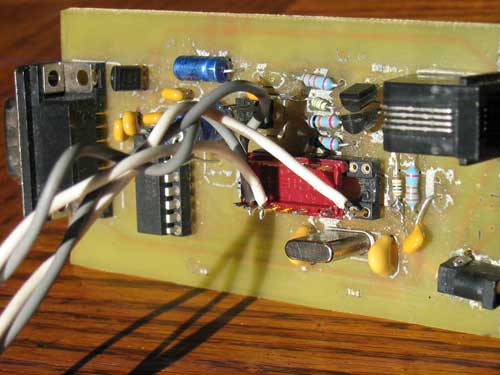This single layer circuit board can be easily made
at home using instructions provided at the site (
http://www.fullnet.com/u/tomg/gooteepc.htm)
and the artwork above. PCB size is 4.042 by 2.222
inches, so this art should be printed at exactly that size.
A couple of additional suggestions regarding
fabrication follow.
- Use 320 grit paper to prepare the
copper surface prior to ironing on the resist. A scotch
brite pad doesn't provide enough bite for the ink to stick. Same is true for the silkscreen layer.
- To get all of the paper residue off off the
silk screen side, soak the board overnight in water. Then scrub
with a toothbrush.
- Use of a drill press will vastly
simplify and speed drilling all the holes required.
For the most part a size 64 drill bit will work for most of the holes,
though a 68 would be preferable for the transistors (3904) and the
voltage regulator (7805) parts. I found a pin vice can be used
to hold these small bits in a normal sized drill press. Small
drill bits can be found at hobby shops catering to model railroaders.
This artwork can be applied to the top side via making
a laser printer decal or though ironing it on from laser printed photo paper.
Also note that this silk-screen artwork must be printed
reversed so that when it is applied to the top side of the
PCB, it comes out correctly.
To assist interested enthusiasts in building their
own Universal Exposure Timer and Event Counter:
- I will sell interested experimenters preprogrammed
AVR 2313 parts and laser printed artwork on photo paper for $15.00.
Contact me via email for more information.
- I am considering having a number of PC Boards
built and made available for sale, but this depends on level
of interest.


